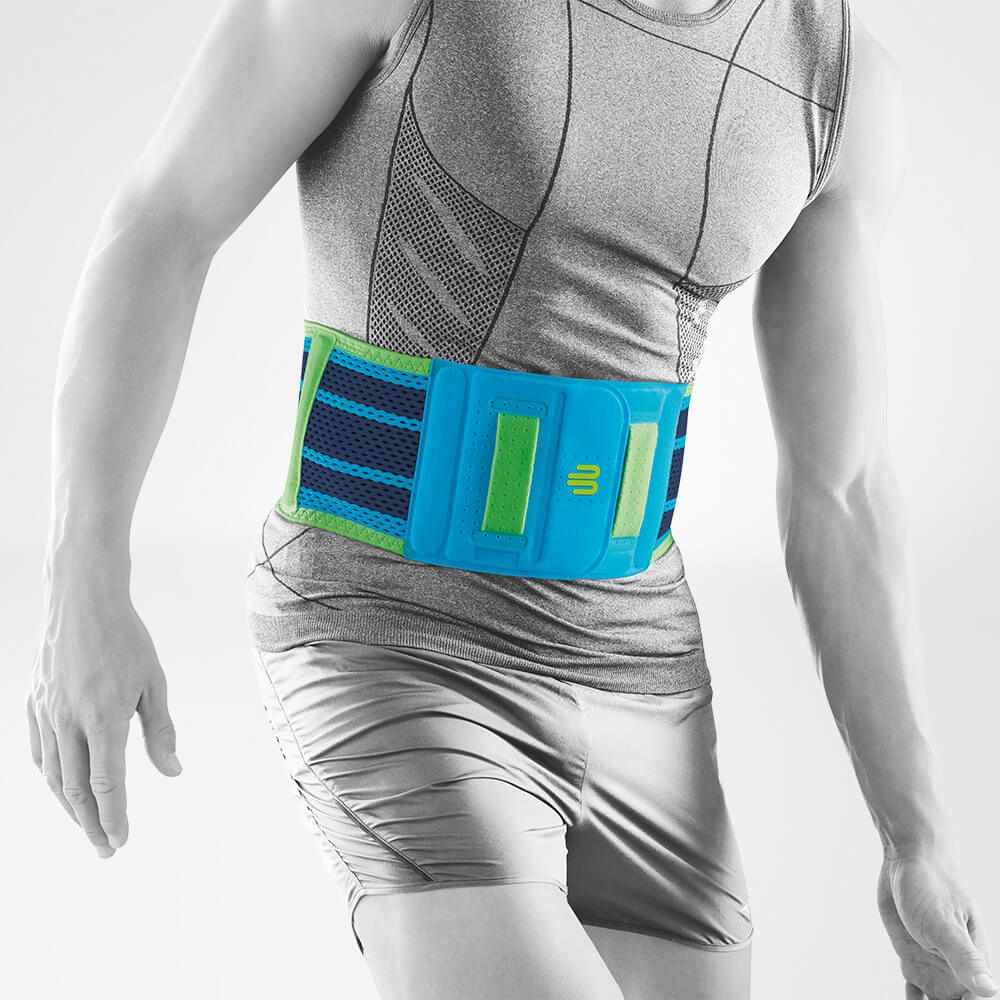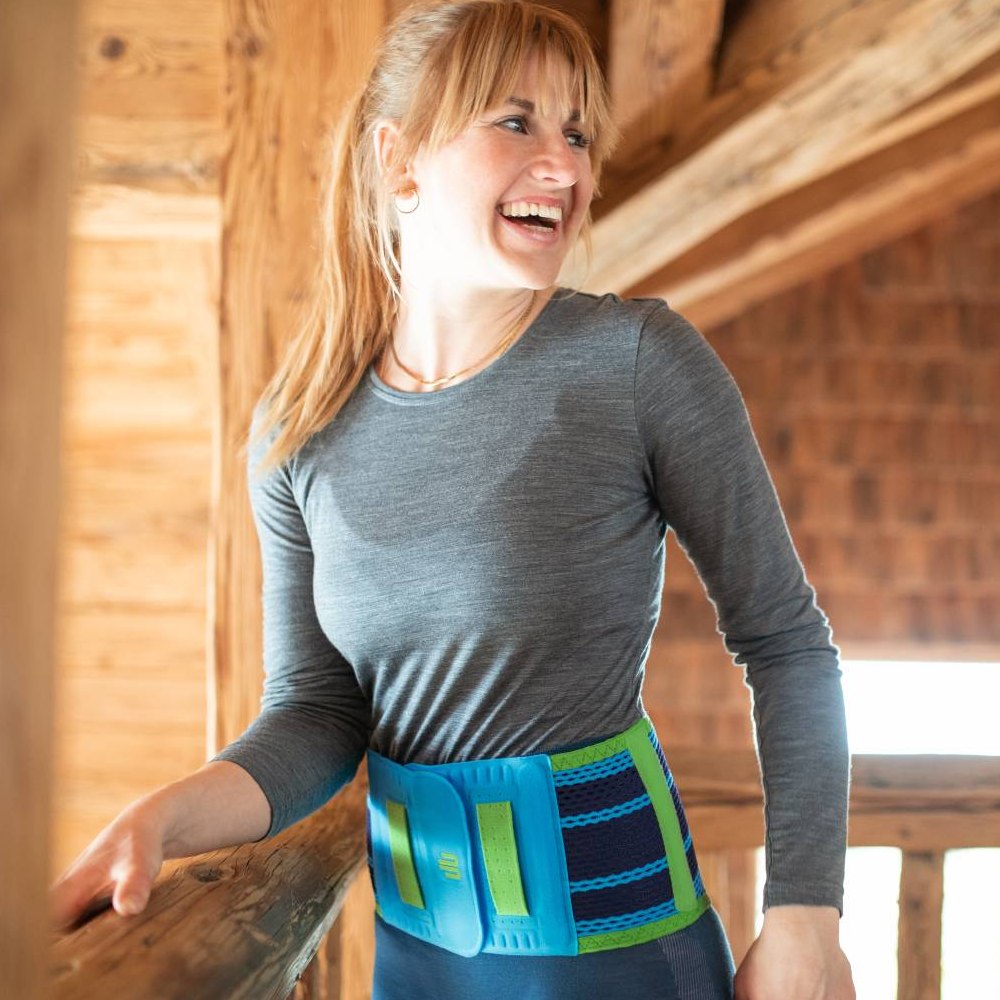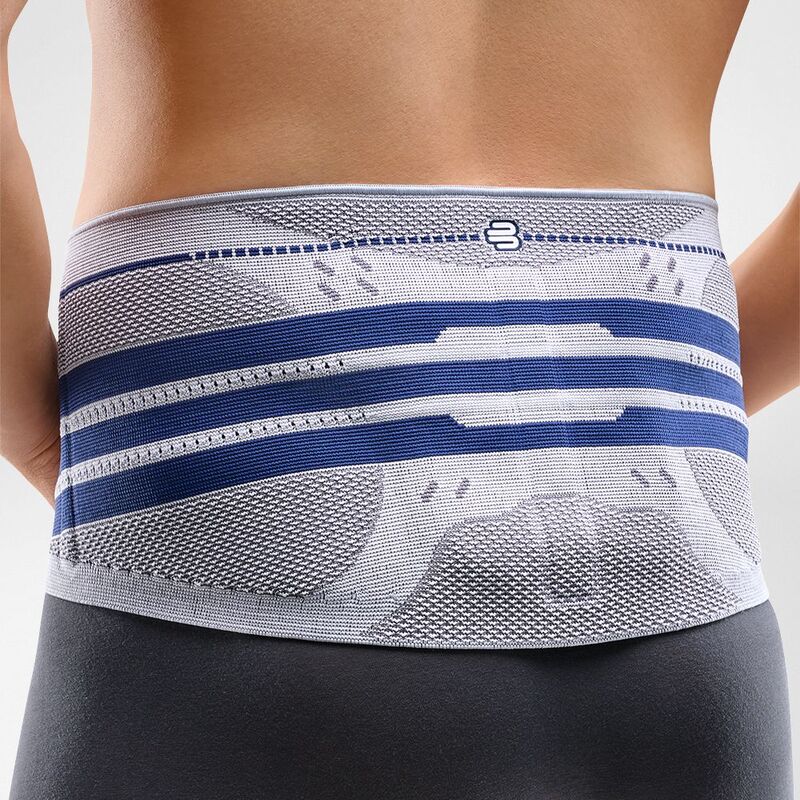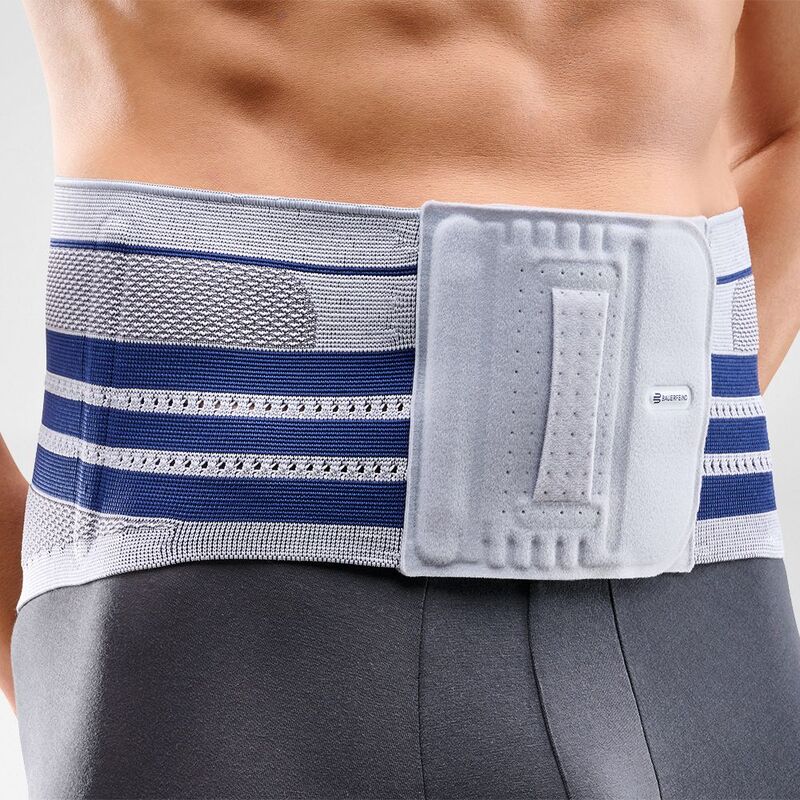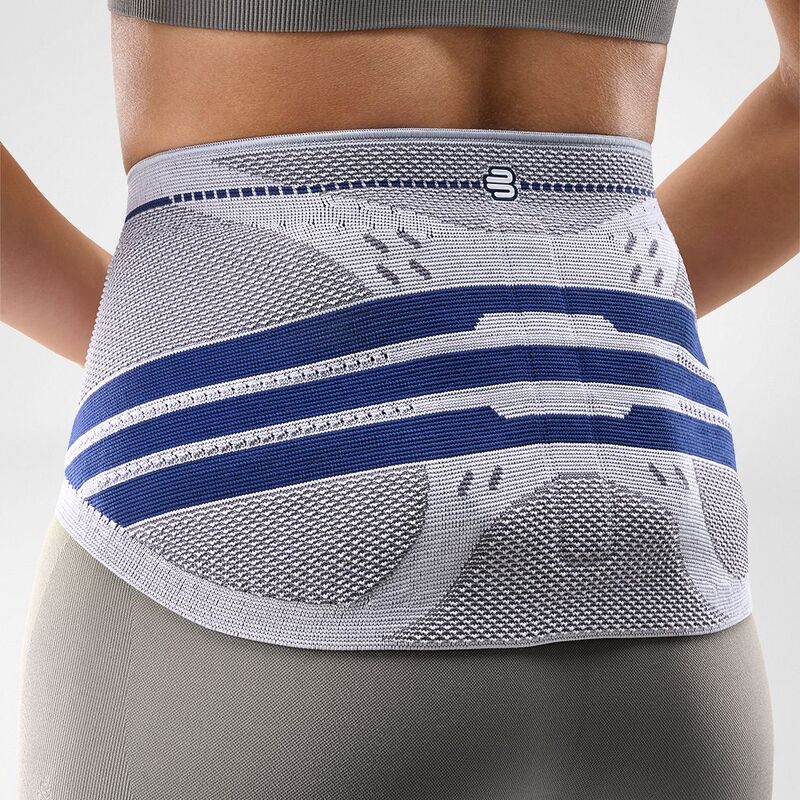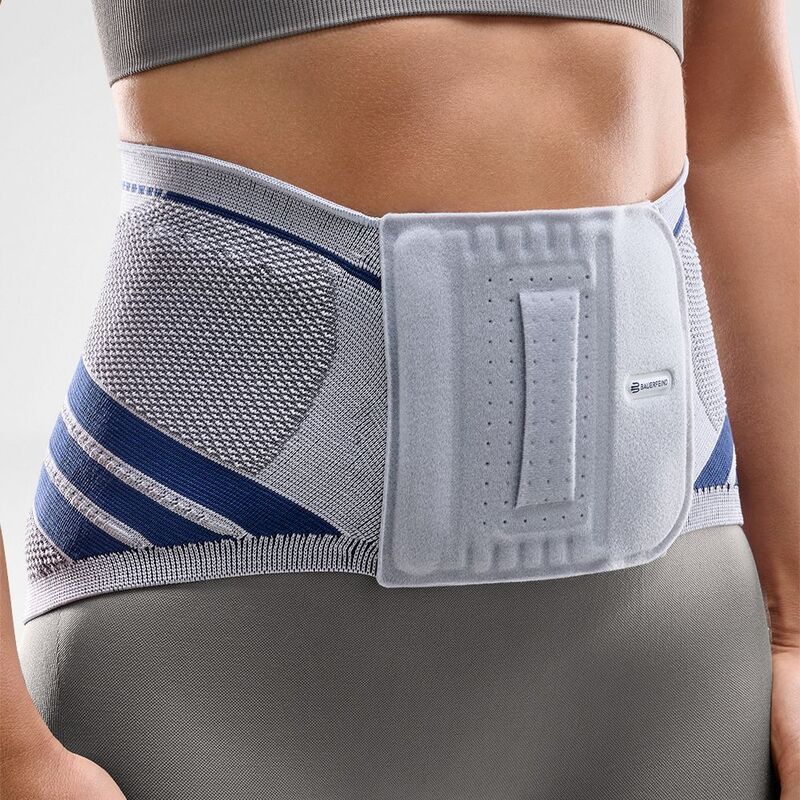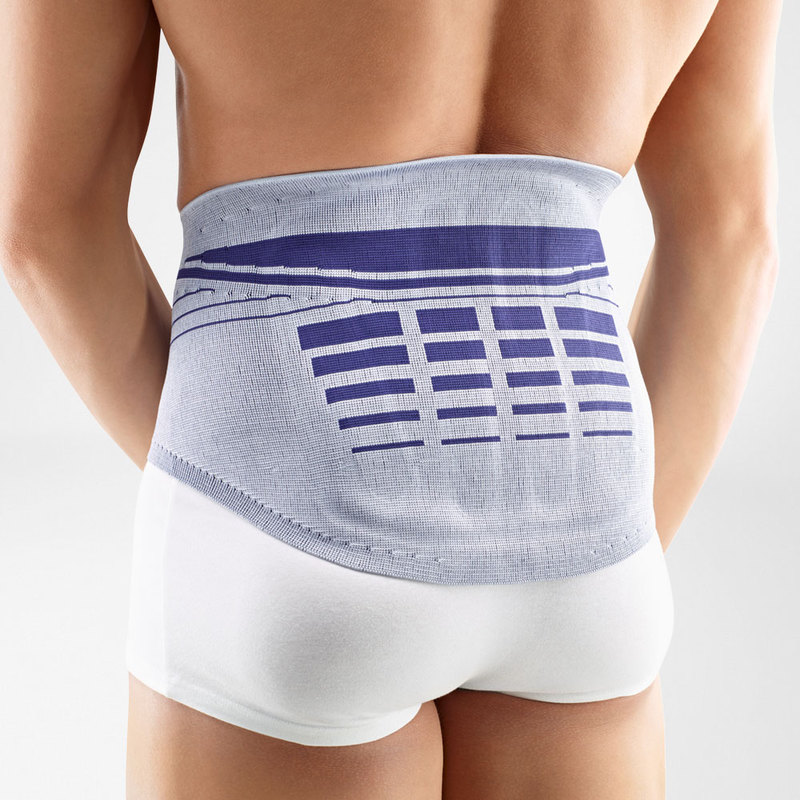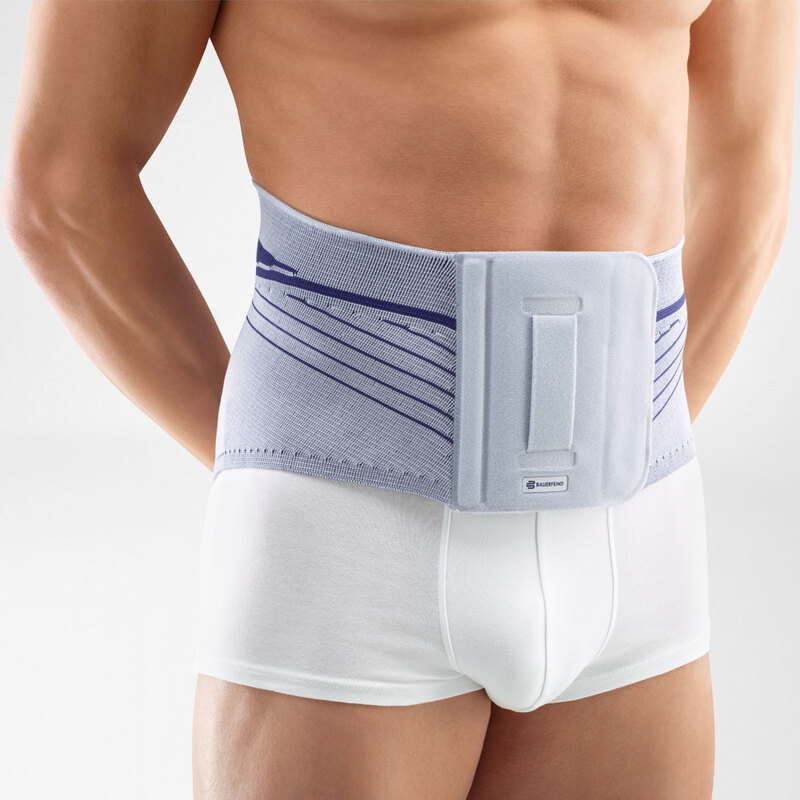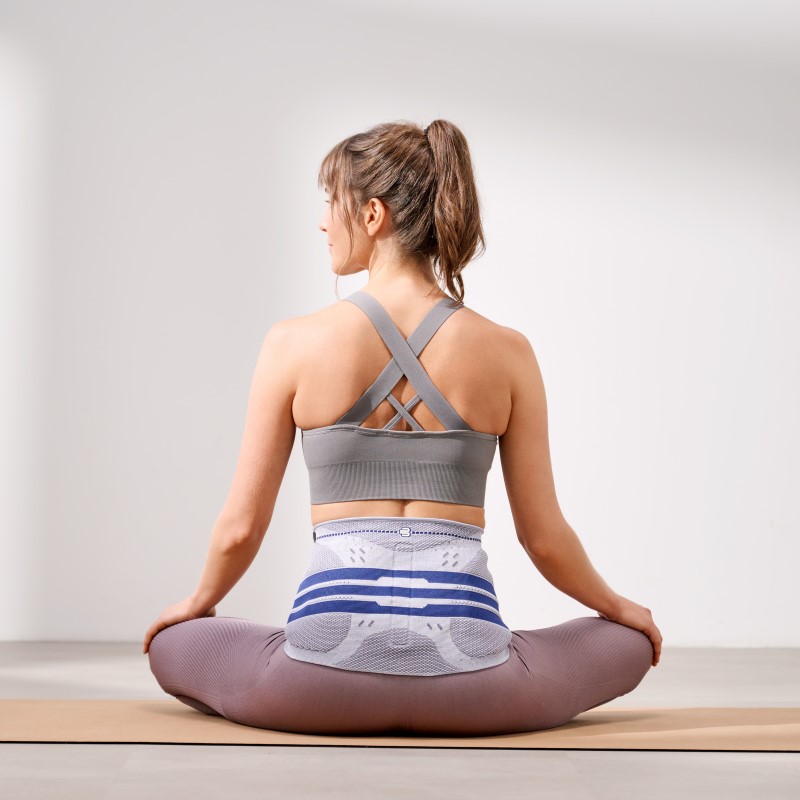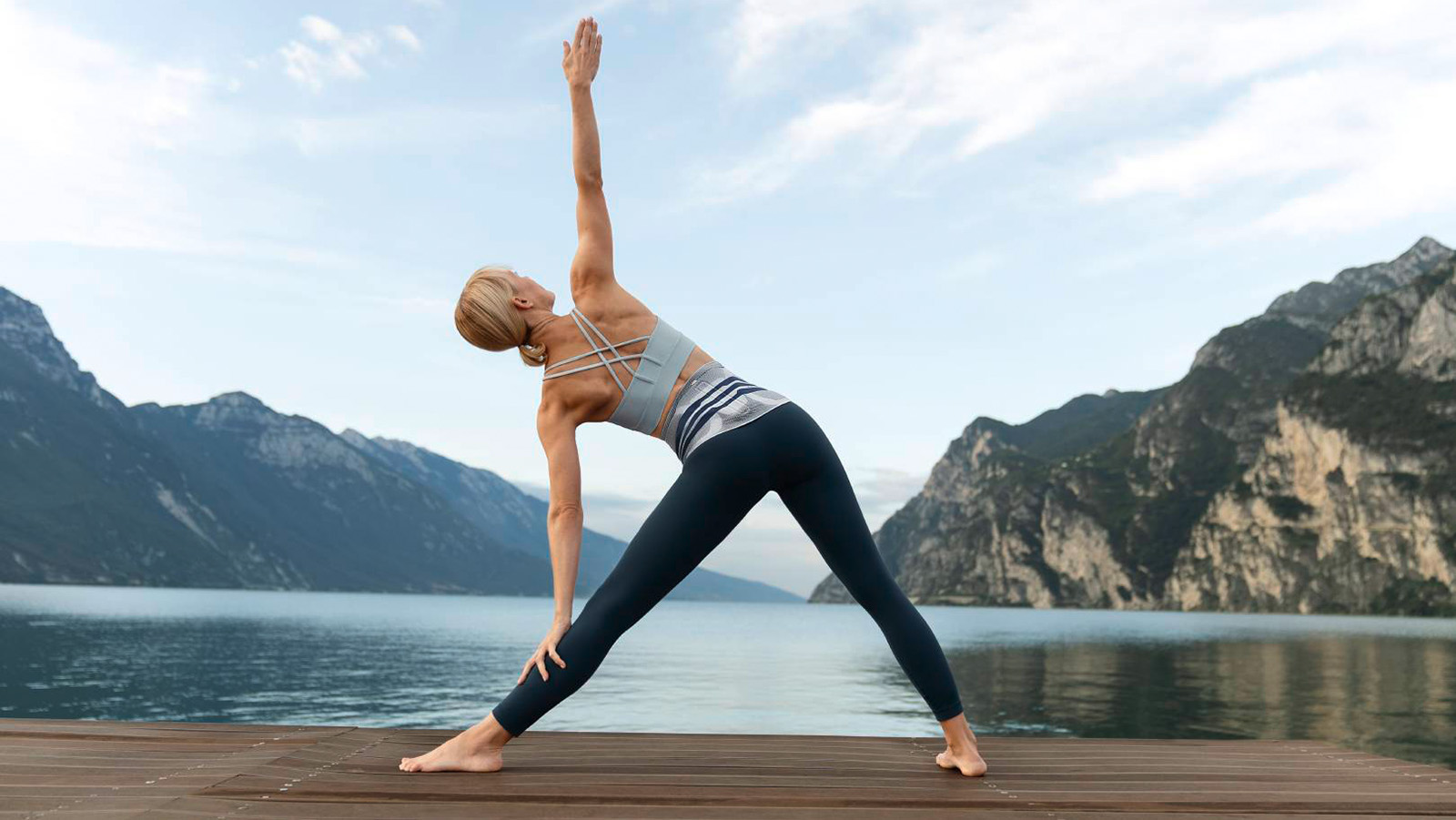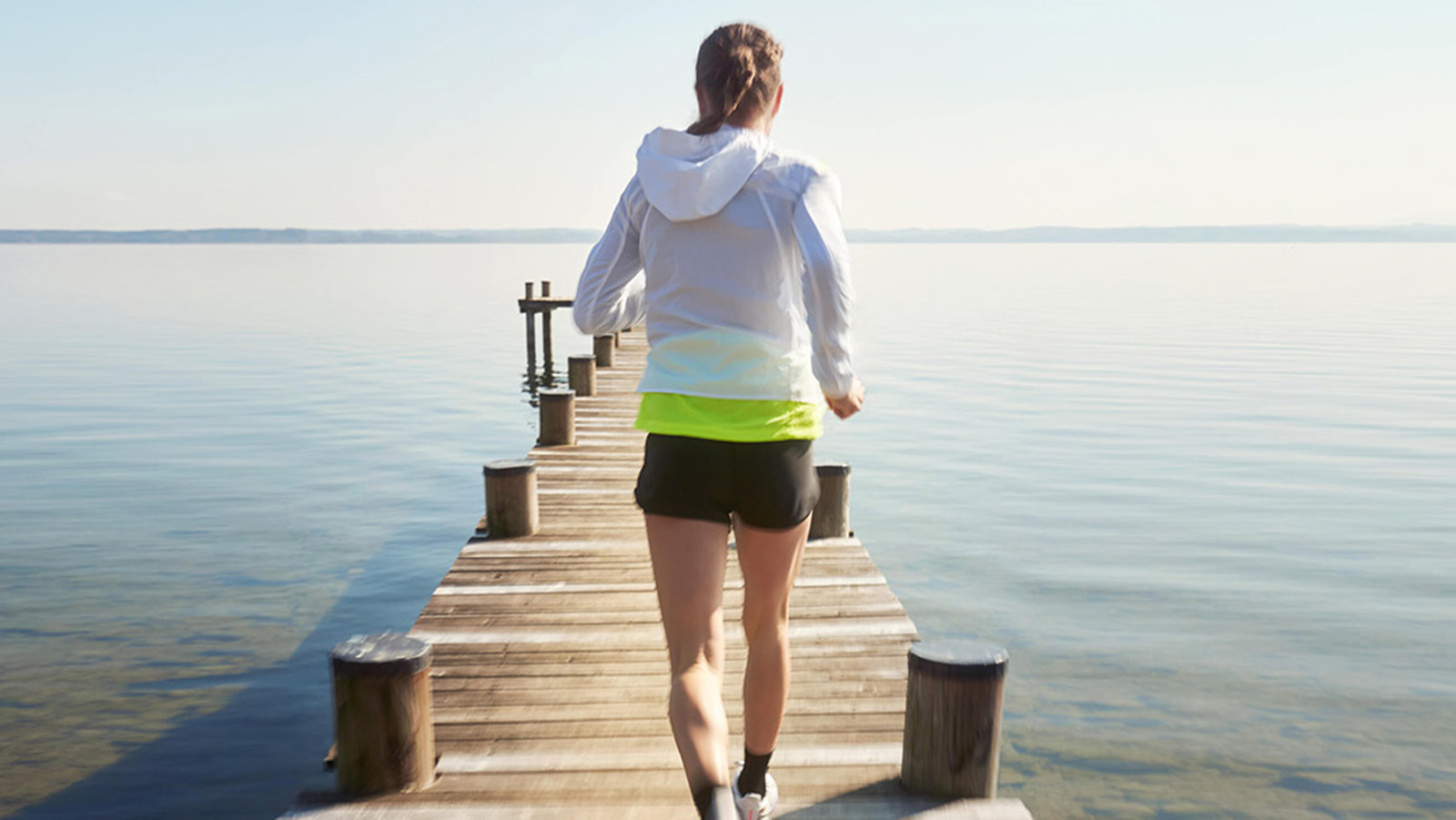Back Brace for running
More support and stability on your runs
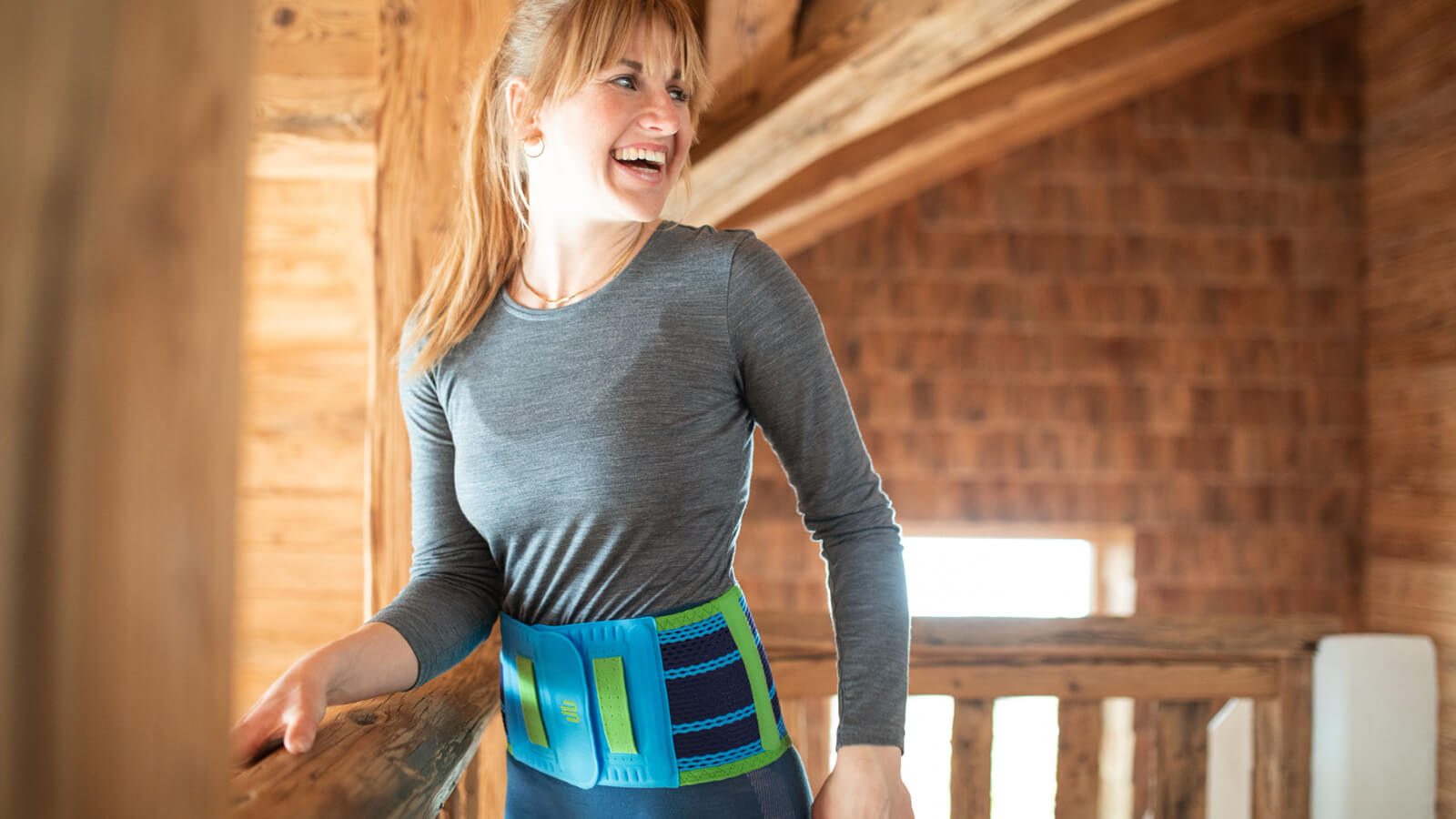
Do you feel back pain while running? Slowing down or temporarily giving up your running routine can be hard, especially when you are training for an important race. Bauerfeind's LumboTrain back brace and SacroLoc SI joint belt provide stability and relief to help limit excessive strain to get you back to doing what moves you. Try Bauerfeind back braces risk-free with our 60-day money-back guarantee.
Why does my lower back hurt when I run?
Lower back or SI joint pain while or after running can be due to biomechanical issues such as leg-length differences, SI joint dysfunction, running gait posture, tight hip flexors and hamstrings or weak core muscles. Tight back muscles with spasms and myofascial trigger points, which feel like little knots, can be caused by a sharp increase in running distance, speed or hill running or by putting too much stress on the body. Cold temperatures and an insufficient warm-up before running can also contribute to back pain.
Bauerfeind’s lightweight, breathable back braces provide stability while allowing for a full range of motion and encouraging abdominal and back extensor muscle activity. Strategically placed pads with nubs provide a trigger point massage to relieve pain, reduce muscle spasms and increase circulation.
I have SI joint pain while running. What can I do?
Most runners describe SI joint pain symptoms as stabbing or dull lower back pain mostly on one side, sometimes radiating in the glutes or thigh. Running feels tight and less fluid. Try Bauerfeind's SacroLoc SI joint belt for stability, relief and protection from recurring excessive strain. With circular compression and two height-adjustable massage pads, SacroLoc provides targeted pain relief to get you back to your training routine. Learn more about the cause and treatment of SI joint pain while running here.
How to wear a back brace for running?
Simply put the LumboTrain back brace around your waist. Place the massage pad in the middle of your lower back and close the brace tightly. All of Bauerfeind’s back braces are washable, so you don't have to worry about wearing them directly on your skin.
How does a back brace relieve pain when running?
Wearing a back brace, such as the Sports Back Support, stabilizes the back without restricting mobility, massages trigger points and increases proprioception.
What to look for in a running back brace?
A back brace for running should be extra breathable, moisture-wicking and durable for your next long run. All Bauerfeind back braces are designed with a unique compression knit material that’s breathable, lightweight and machine washable, so you can wear it as often as needed, wherever it’s needed.
Can I wash my Bauerfeind back brace?
Yes. Washing your back brace or SI joint belt helps maintain their shape and last longer.
For products with Velcro straps, fasten them securely at the place provided on the brace. Remove pads when applicable, for example, on the Sports Back Support. Machine-wash your brace in cold water using a gentle or delicate cycle. Wash separately using a laundry detergent with no additives (do not use fabric softener or Woolite). Lay flat and let it air-dry. Do not put it in the dryer. Proper washing and drying helps keep the knit’s elasticity and original fit.
You might also be interested in:
Yoga For Back Pain
Seven gentle strength and stretching yoga poses to mobilize, stretch and strengthen your back.
Back Therapy
Learn more about a holistic back therapy with five models for back pain relief.
Running with SI Joint Pain
Symptoms, causes and treatment options to get you back on track.
SI Joint Relief
Explore how to find relief for SI joint dysfunction.
This information is provided for general information purposes and should not be relied on as a substitute for medical advice, evaluation or care from a qualified and licensed health care provider. The information contained here is not to be considered a plan of care of physical therapy.



